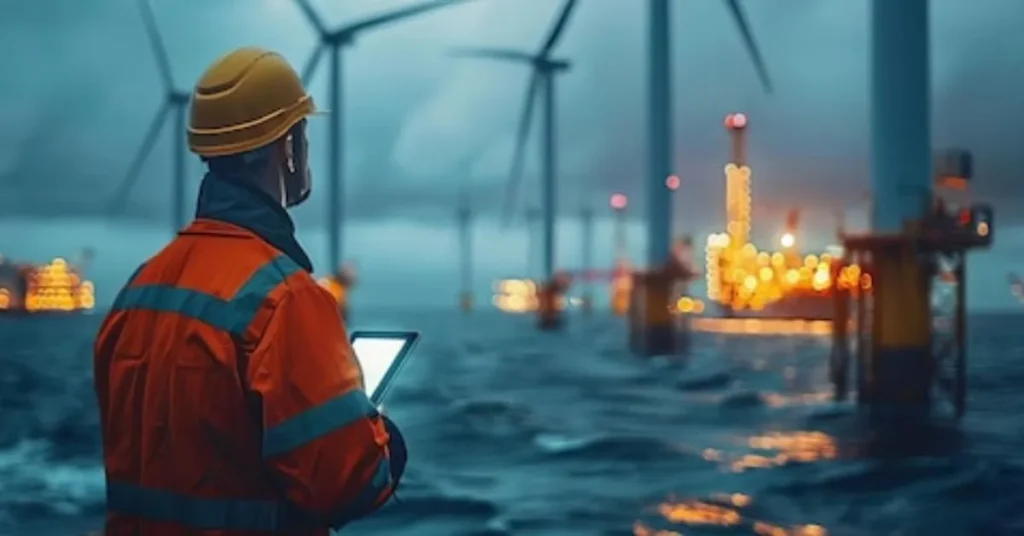Deep offshore technology refers to the advanced techniques and equipment used to explore, drill, and produce oil and gas from beneath the ocean floor, typically at depths greater than 500 meters. This field combines various engineering disciplines to safely and efficiently tap into underwater resources. Given the ever-growing global energy demand, deep offshore technology has become a cornerstone in the energy industry, offering access to previously unreachable reserves.
Historical Development
Early Beginnings
The journey of deep offshore technology began in the mid-20th century when onshore oil fields started depleting. The search for new reserves pushed the boundaries offshore, leading to the development of the first offshore drilling platforms in the 1940s and 1950s.
Key Milestones
Significant milestones in this field include the introduction of dynamic positioning systems in the 1960s, enabling rigs to maintain their position without anchors, and the development of subsea production systems in the 1970s, allowing operations in deeper waters. The 2000s saw the rise of ultra-deepwater drilling, reaching depths of over 3000 meters.
Key Components of Deep Offshore Technology
Subsea Engineering
Subsea engineering involves designing and installing equipment on the ocean floor. This includes wellheads, pipelines, and manifolds, which are crucial for controlling and transporting extracted hydrocarbons.
Offshore Drilling
Offshore drilling is the process of extracting oil and gas from beneath the seabed. It requires specialized rigs and drilling techniques to handle the unique challenges posed by deepwater environments.
Floating Production Systems
Floating production systems (FPS) are used to process hydrocarbons on site. These systems, which include FPSOs, are essential for deepwater operations where fixed platforms are impractical.
Types of Offshore Platforms
Fixed Platforms
Fixed platforms are immobile structures anchored directly to the seabed. They are ideal for shallow waters but become less feasible as depth increases.
Compliant Towers
Compliant towers are flexible structures that sway with ocean currents and waves. They are used in deeper waters than fixed platforms but still have depth limitations.
Semi-submersible Platforms
Semi-submersible platforms float on the surface and are anchored by mooring lines. They can operate in deeper waters and are stable even in rough seas.
Floating Production Storage and Offloading (FPSO) Units
FPSOs are floating vessels equipped to produce, process, and store oil and gas. They offer great flexibility and can operate in very deep waters.
Technological Innovations
Robotics and Automation
Robotics and automation play a crucial role in deep offshore operations. Remotely Operated Vehicles (ROVs) and Autonomous Underwater Vehicles (AUVs) are used for inspection, maintenance, and repair tasks that are too dangerous for human divers.
Advanced Materials
The development of advanced materials, such as high-strength steel and corrosion-resistant alloys, has enabled the construction of durable and reliable offshore structures.
Digital Twin Technology
Digital twin technology creates virtual models of offshore assets, allowing for real-time monitoring and predictive maintenance. This innovation enhances operational efficiency and safety.
Environmental Considerations
Impact on Marine Life
Offshore drilling can significantly impact marine ecosystems. Measures such as underwater noise reduction, controlled discharge of drilling fluids, and careful placement of structures are essential to mitigate these effects.
Emission Control Strategies
To minimize greenhouse gas emissions, the industry employs strategies like carbon capture and storage (CCS), use of cleaner fuels, and implementation of energy-efficient technologies.
Regulatory Frameworks
International and national regulations govern offshore drilling activities to protect the environment. Compliance with these regulations is crucial for sustainable operations.
Economic Impact
Contribution to Global Economy
Deep offshore technology contributes significantly to the global economy by providing a steady supply of oil and gas, essential for various industries and daily life.
Job Creation
The industry generates numerous jobs, from engineers and technicians to support staff, both onshore and offshore.
Investment Opportunities
The continuous advancement of deep offshore technology presents lucrative investment opportunities for companies and investors looking to capitalize on the growing energy demand.
Challenges in Deep Offshore Technology
Technical Challenges
Operating in deepwater environments poses numerous technical challenges, including high pressure, extreme temperatures, and complex seabed terrain.
Environmental Risks
The risk of oil spills and other environmental incidents is a major concern. Implementing robust safety measures and emergency response plans is vital to minimize these risks.
Economic Viability
The high cost of deepwater exploration and production requires careful economic planning and risk management to ensure profitability.
Case Studies
Notable Deepwater Projects
Projects like the Gulf of Mexico’s Thunder Horse and Brazil’s pre-salt fields showcase the capabilities and challenges of deep offshore technology. These projects have set benchmarks in terms of depth, production rates, and technological innovation.
Lessons Learned
Each deepwater project provides valuable lessons on improving technology, safety, and environmental protection, contributing to the industry’s overall advancement.
Future Trends in Deep Offshore Technology
Emerging Technologies
Innovations such as subsea processing, enhanced oil recovery techniques, and next-generation drilling equipment are shaping the future of deep offshore technology.
Future Prospects
With continuous advancements, the potential for exploring and producing oil and gas from even greater depths is on the horizon, ensuring a stable energy supply for the future.
Role of Artificial Intelligence in Offshore Technology
AI in Predictive Maintenance
AI-powered predictive maintenance helps identify potential equipment failures before they occur, reducing downtime and maintenance costs.
AI in Operational Efficiency
AI enhances operational efficiency by optimizing drilling operations, monitoring production processes, and providing real-time data analysis.
Safety Measures in Offshore Operations
Safety Protocols
Strict safety protocols, including regular drills, equipment inspections, and adherence to international safety standards, are crucial for offshore operations.
Incident Response Strategies
Effective incident response strategies, including well-coordinated emergency plans and rapid response teams, are essential to mitigate the impact of accidents.
Training and Workforce Development
Skills Required
The offshore industry requires a skilled workforce proficient in engineering, geosciences, and advanced technologies.
Training Programs
Comprehensive training programs, including simulations and on-the-job training, ensure workers are well-prepared for the challenges of offshore operations.
Global Perspectives
Leading Countries in Offshore Technology
Countries like the United States, Brazil, and Norway are at the forefront of deep offshore technology, leading in innovation and production capabilities.
International Collaboration
International collaboration, including joint ventures and knowledge sharing, is essential for addressing global energy challenges and advancing offshore technology.
Conclusion
Deep offshore technology has revolutionized the way we access and produce energy from beneath the ocean floor. With continuous technological advancements, the industry is poised to meet future energy demands sustainably and efficiently. However, addressing the environmental and economic challenges remains crucial for its long-term viability. The future of deep offshore technology looks promising, with emerging innovations and increasing global collaboration paving the way for a stable and sustainable energy future.
FAQs
1. What is deep offshore technology?
Deep offshore technology refers to the advanced techniques and equipment used to explore, drill, and produce oil and gas from beneath the ocean floor, typically at depths greater than 500 meters.
2. How does offshore drilling work?
Offshore drilling involves using specialized rigs and techniques to drill through the seabed and access oil and gas reserves. The process includes setting up drilling platforms, using drill bits to bore through the seabed, and installing production equipment to extract the hydrocarbons.
3. What are the environmental impacts of offshore drilling?
Offshore drilling can impact marine life, contribute to water pollution, and pose risks of oil spills. Mitigating these impacts requires strict adherence to environmental regulations, the use of advanced technology, and robust safety measures.
4. What are the economic benefits of offshore drilling?
Offshore drilling contributes significantly to the global economy by providing a steady supply of oil and gas, generating jobs, and creating investment opportunities. It also supports various industries reliant on these resources.
5. What is the future of deep offshore technology?
The future of deep offshore technology is promising, with continuous advancements in subsea processing, enhanced oil recovery techniques, and AI integration. These innovations will enable deeper and more efficient exploration and production, ensuring a stable energy supply.







